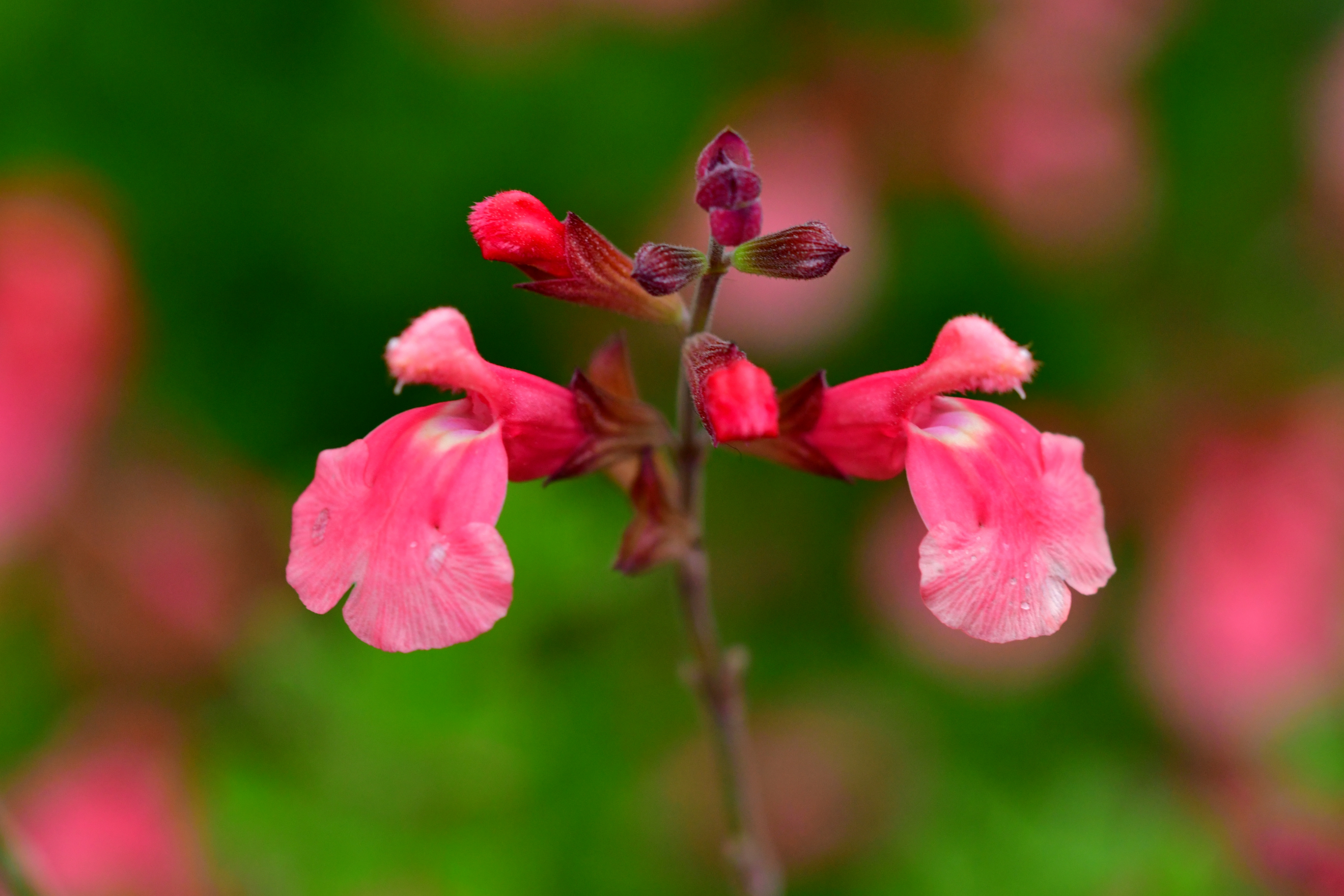Baby sage
(Salvia microphylla)

Description
Salvia microphylla, also known as the Blackcurrant Sage, is a herbaceous perennial plant native to Mexico and Central America. It belongs to the family Lamiaceae, which also includes other popular garden plants such as lavender and mint. This plant is prized for its attractive foliage and flowers, as well as its medicinal properties. In this article, we will explore the botanical characteristics, growing conditions, and uses of Salvia microphylla. Botanical Characteristics: Salvia microphylla is a bushy, evergreen shrub that grows up to 1.5 meters tall and 1 meter wide. Its leaves are ovate to lanceolate in shape, with a dark green color and a slightly rough texture. The leaves have a distinctive aroma, which is often described as fruity or spicy. The plant produces clusters of small, tubular flowers that are typically bright red or pink in color. The flowers bloom from spring to fall, and are highly attractive to hummingbirds and butterflies. Growing Conditions: Salvia microphylla is a relatively easy plant to grow, and is well-suited to a variety of garden conditions. It prefers full sun to partial shade, and well-drained soil that is rich in organic matter. The plant is drought-tolerant once established, but will benefit from regular watering during periods of extended dryness. In areas with harsh winters, Salvia microphylla may die back to the ground, but will regrow in the spring. The plant is hardy to USDA zones 7-10. Propagation: Salvia microphylla can be propagated from seed, cuttings, or division. Seeds should be sown in early spring, and can take up to 3 weeks to germinate. Cuttings should be taken in early summer, and rooted in a moist, well-draining soil mix. Division should be done in early spring or fall, when the plant is dormant. The plant can also self-seed, and will readily naturalize in suitable conditions. Uses: Salvia microphylla has a long history of use in traditional medicine. It is known to have anti-inflammatory, antimicrobial, and antioxidant properties, and has been used to treat a variety of ailments, including headaches, sore throats, and skin irritations. The plant contains several compounds, including rosmarinic acid and flavonoids, which are believed to be responsible for its medicinal properties. In addition to its medicinal uses, Salvia microphylla is a popular ornamental plant. It is well-suited to mixed borders, rock gardens, and container plantings. The plant's attractive foliage and colorful flowers make it a standout in any garden. It is also a valuable plant for pollinators, attracting hummingbirds, butterflies, and bees to the garden. Conclusion: Salvia microphylla is a versatile and attractive plant that is well-suited to a variety of garden conditions. Whether grown for its ornamental value or its medicinal properties, this plant is a valuable addition to any garden. With its beautiful foliage and bright, colorful flowers, it is sure to be a standout in any landscape.
Taxonomic tree:







